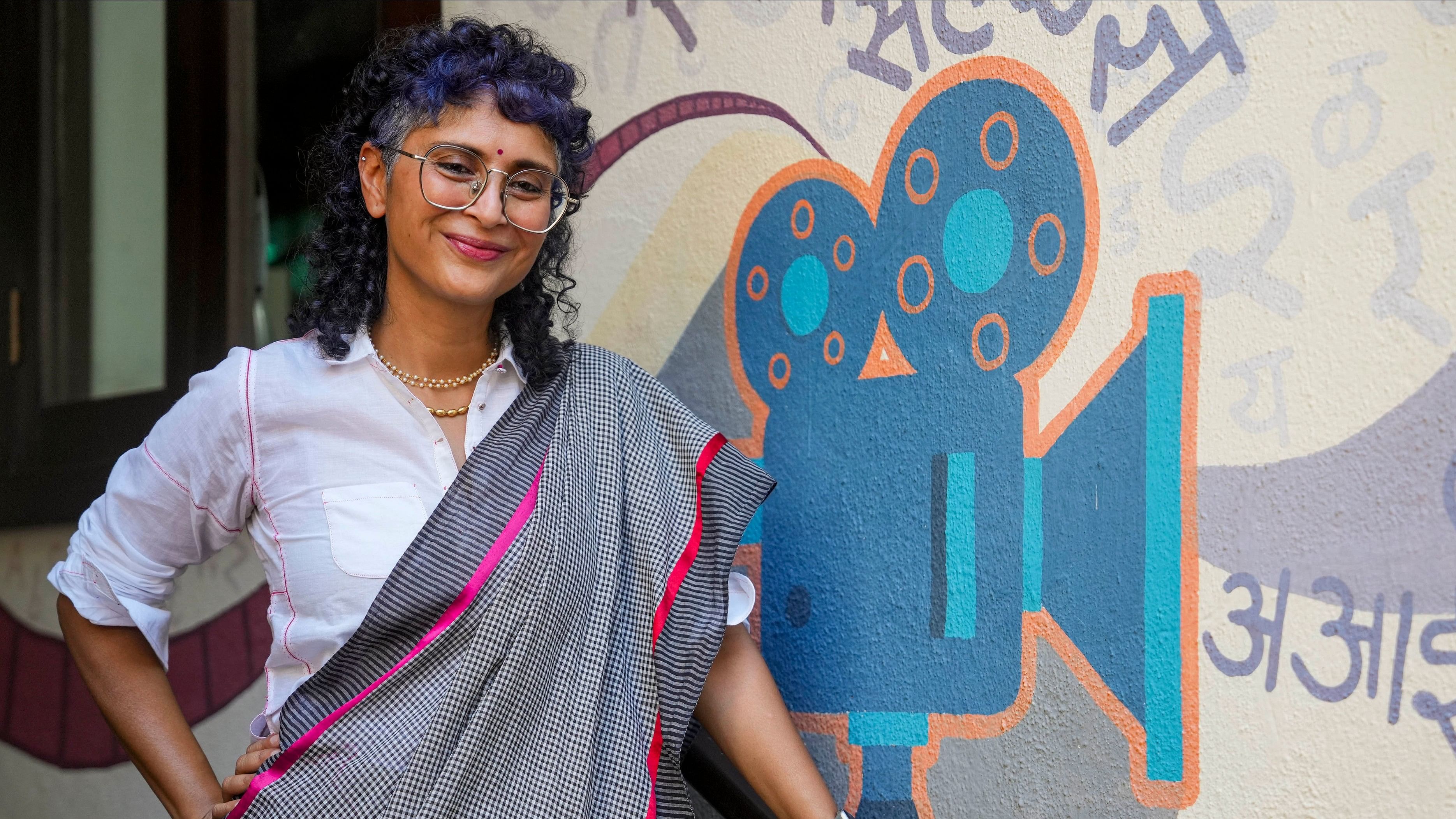
Kiran Rao, director of Laapataa Ladies
Credit: PTI File photo
Laapataa Ladies’, directed by Kiran Rao, has created a buzz with its subtle portrayal of the Hindi heartland, where patriarchy is a way of life. It has also made a mark for blending the aesthetics of art cinema with the paraphernalia of commercial cinema.
This genre, called middle cinema, was often associated with directors like Basu Bhattacharya, Basu Chatterjee, Pahlaj Nihalani, and Sai Paranjpye, but it is often the women who employed it to create delightful films. Here are four films by female directors.
Sparsh (1980), Sai Paranjpye
The building of Delhi’s Blind Relief Association still evokes memories of Sai Paranjpye’s debut film Sparsh, released in 1980. Her stories are always sensitive and rooted in reality, as seen in ‘Katha’ (1983), ‘Chashme Buddoor’ (1981), and ‘Disha’ (1990). Sparsh is the love story of a visually impaired school principal named Anirudh, played by Naseeruddin Shah, and Kavita, played by Shabana Azmi. It is a poignant portrayal of the struggles of the blind. Anirudh does not seek sympathy; he anxiously wants to be part of mainstream society. This puts him in isolation as he begins to perceive Kavita’s affection for him and his students as a mere act of pity. Despite being a debut film with a limited release, Sparsh made a huge splash. It is considered one of the best films ever made on the blind community.
Rudali (1993), Kalpana Lajmi
Rudali is set in Rajasthan. Based on an eponymous Bengali novel by Mahasweta Devi, it tells the story of professional mourners. It revolves around Shanichari, brilliantly portrayed by Dimple Kapadia, and her tragic life. She is married to a bonded labourer, and after his death, she is left to fend for herself. Shanichari’s tears dry up, and she is unable to cry as the tragedies befalling her leave her numb. She develops a close connection with another professional mourner, Bhikni, played by Raakhee. She starts feeling again. When Bhikni dies, she wails profusely. The brilliance of director Kalpana Lajmi and the performances of mainstream actors Raj Babbar, Dimple Kapadia, and Raakhee won this film critical acclaim and commercial success. It depicts the lives of professional mourners, who sell tears, wail, and beat their chests to create an atmosphere of grief for the rich.
Phir Milenge (2004), Revathy
This film didn’t do well at the box office, but it won credit for addressing the topic of HIV/AIDS. The film is loosely based on Jonathan Demme’s film ‘Philadelphia’, which got Tom Hanks the Oscar for best actor. Tamanna, played by Shilpa Shetty, is a creative director at an ad agency. She is fired when her boss gets to know that she has AIDS. She hires a lawyer named Tarun, played by Abhishek Bachchan. His court monologues about AIDS are riveting. The return of Rohit, Tamanna’s lover, played by Salman, adds an interesting element of grieving romance, not common in Bollywood films. As is typical in commercial Hindi films, it gets a happy ending. The film is remarkable for bringing together a star cast from commercial cinema to address an important issue.
English Vinglish (2012) Gauri Shinde
This is about the post-colonial obsession of Indians with English. This film has an unassuming protagonist named Sashi, beautifully portrayed by Sridevi. Sashi is a housewife gifted with cooking skills, but her family looks down upon her, treating her like a domestic help. The family dynamics is subtly documented; for instance, her husband, played by Adil Hussain, thinks he is complimenting her when he says she is born to make laddoos. However, it is also a comment that invisibilises her within the family. When she travels to New York for her niece’s wedding, she faces cultural shock and humiliation, and realises that her lack of English-speaking skills is holding her back. The film shows how she slowly transforms into a confident woman, navigating the streets of Manhattan. Sridevi came back to the big screen after 15 years with this film, and owned it. It has good music and a plot that keeps everyone hooked.